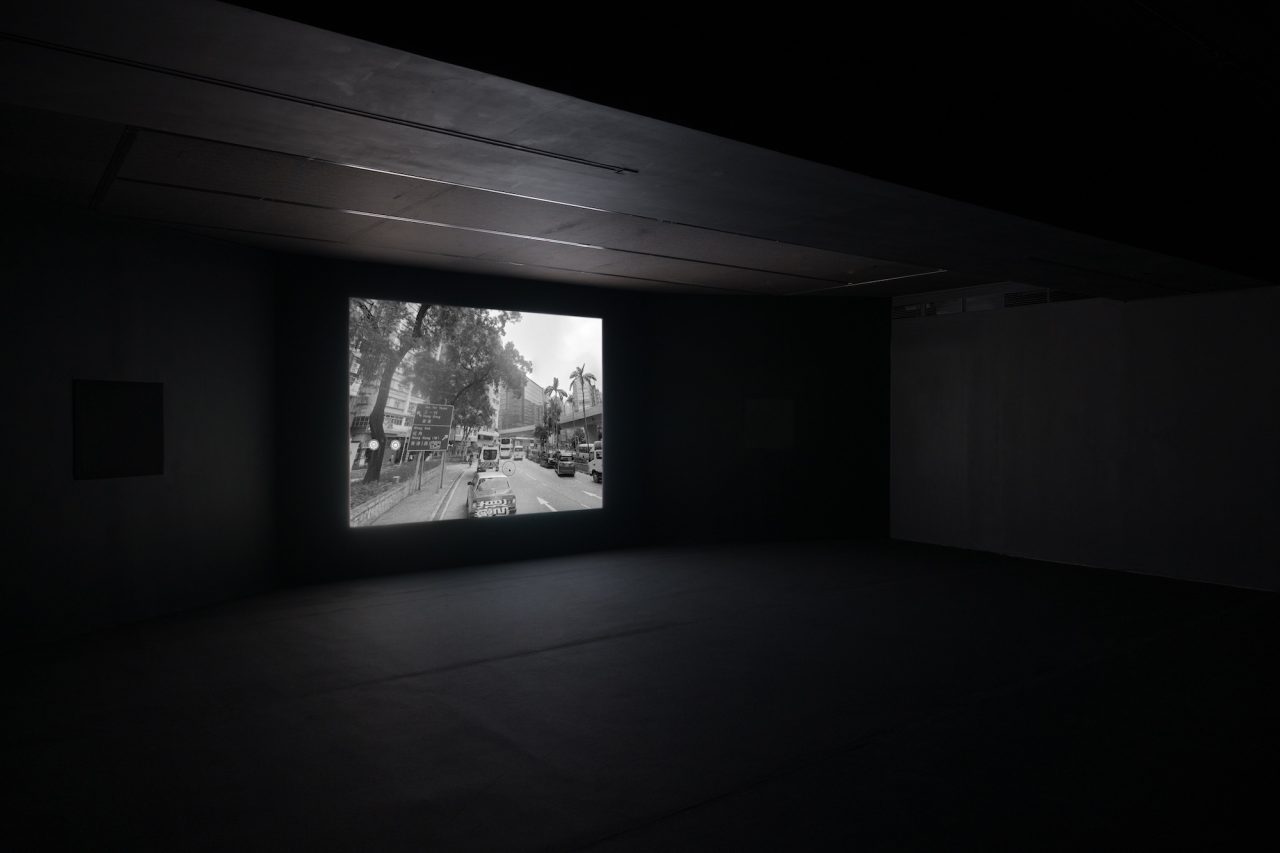Map of Traces
Chan Hau Chun


Still from Map of Traces《記憶座標》, 2025, courtesy of the artist and Empty Gallery
Empty Gallery is pleased to present our first exhibition with Hong Kong-based filmmaker Chan Hau Chun. Chan’s quietly radical moving image practice is defined by a sense of diaristic intimacy and empathetic distance grounded in a deep regard for her city and its inhabitants—both past and future. Depicting the affective landscape of contemporary Hong Kong through a direct engagement with figures who rarely (if ever) enter into the matrix of official representation, Chan’s films bear witness to the presence of a precarious and yet defiant autonomy which might be nothing more than the continued practice of simply living. For her show at Empty, Chan will debut a new moving image work entitled 《記憶座標》 which weaves together elements of landscape cinema, autobiography and guerilla reportage in a poignant exploration of time, memory, and loss after the protests.
Map of Traces, Chan’s English title, already serves to elucidate some of the thematic strands which structure her film. Inherent in the idea of a trace is both the absence of something which was once there and the act of discovering or searching for this evidence—these fragile particles of memory—an act that also requires a certain kind of unshakeable faith in one’s own perceptions. This sentiment is echoed in the textual intertitles which open the film (and which serve to punctuate it), in which Chan reflects, “If history is always tied to events, then memory is like a hidden shape, waiting for the right moment to resurface”. These intertitles reproduce excerpts of Chan’s letters to an imprisoned friend referred to as C.R. In them, she relates incidents from her daily life, inquires after his well-being, and reminisces about their shared experiences together. C.R.’s responses to Chan are omitted—but this only has the paradoxical effect of heightening his presence—as if film were not only an elegy but a sort of time capsule or prosthetic memory for C.R. This discovery and activation of memory’s fugitive nature, its complex entanglement with place, and its potential as a site of resistance to official history constitutes both an ethical and formal principle of the work.
《記憶座標》operates in the cinematic mode of the essay film, unfolding as a series of temporally and stylistically disparate vignettes—controlled explosions of space-time and emotion (sometimes individual, sometimes collective)—sutured together by the aforementioned letters. In the film’s first segment, Chan reminisces with an acquaintance now living in London about her memories of Nathan Road. As they converse remotely, Chan guides both her friend and the viewer through Kowloon Park using Google Street View. In exile, mediated sequences of cached images and anonymized visages constitute her only access to the now-distant space and time of her former life. But what we, perhaps too readily, tend to think of as the cold stuff of technocratic surveillance—here enables the warmth of and vulnerability of individual recollection.
Similarly unexpected reversals or re-balancings animate the other episodes in Chan’s film—an eccentric old man arrested for his prolific street graffiti invents a method of “drawing” on public infrastructure with water; an outpouring of spontaneous musical rebellion is rendered mute, but C.R. learns to play the guitar in prison. Despite the visible evidence of violence and mourning which the film presents, Chan is careful not to linger on these images too long—counterpoising the interiority of the textual, the ellipsed, and the offscreen to the tyranny of the visible and the tendency of documentary to overdetermine our conception of social reality (along with social possibility). The landscape of the city itself appears not as passive or neutral backdrop but as fragmented site of entanglement between memory, ideology, and power. A shot of plastic barricades in Victoria Park reveals a functional resonance between the modernist grid of the surrounding high-rises and these seemingly benign instruments of control. Unexpectedly, the surface of the image itself begins to shear, distorting and destabilizing these narrowly utilitarian geometries. Public architecture and infrastructure are themselves seen to constitute a kind of evidence, or trace—one in which unexamined historical trauma and suspicion of collectivity have hardened themselves into a built world of privatization and self-interest. But within the smallness and inflexibility of these structures, Chan is somehow able to expand a temporary space, however precarious, for the vulnerability and dignity of her subjects. This fragile territory, situated on the porous border between personal and collective memory, is perhaps the terrain of a new vernacular in Hong Kong cinema—one which escapes the stylized anomie of the New Wave to attempt a genuine grappling with the circumstances which form us.
Chan Hau Chun is a filmmaker living and working in Hong Kong. She received her BA from City University of Hong Kong in 2015. Her work was the subject of a solo exhibition, Silent Sojourns, at WMA Space, Hong Kong in 2024. She has also participated in group exhibitions including Tsaiyun (Rosy-Cloud) Bridge / Forget Each Other in the Rivers and Lakes at Hordaland Kunstsenter, Norway (2023); An Individual as Society in Guangzhou, China (2019); and Drifting Borders at Cattle Depot Artist Village, Hong Kong (2018).
Her films have been screened at various festivals including Golden Horse Awards (Taipei), Taiwan International Documentary Festival (TIDF), Image Forum Festival (Tokyo), International Short Film Festival Oberhausen (Germany), Hong Kong ifva Festival, and True/False Film Fest (Missouri).